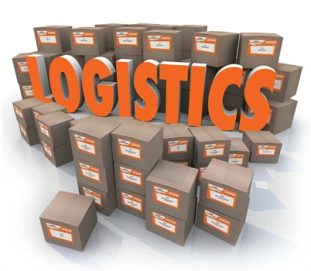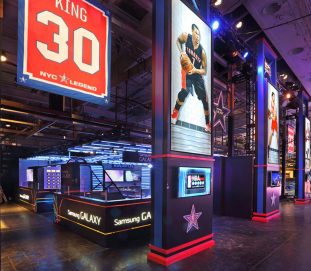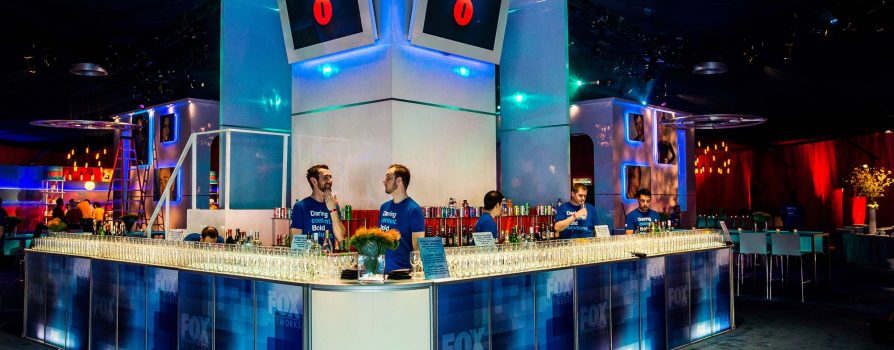
Planning and executing a large corporate event is a high-stakes game. Whether you’re a corporate event manager or a contracted event designer or producer, your company and personal reputation is on the line.
In our 15 years of business, we’ve certainly seen the good, the bad, and the ugly side of large-scale promotional events and parties! Here are the top 5 ways to avoid disaster when planning and executing your big idea.
1. Create a strong team of vendors
The team on an event can include representatives from the event production agency, event designer, scene shop, event site, lighting and audio visual. It’s important that each of the representatives on this team have decision-making ability. You need representatives who can call the shots for both large and small decisions.
You need to completely trust your team. If possible, meet in person to develop personal connections and establish clear responsibilities. Your team should be experts in their field, so be open to their recommendations.
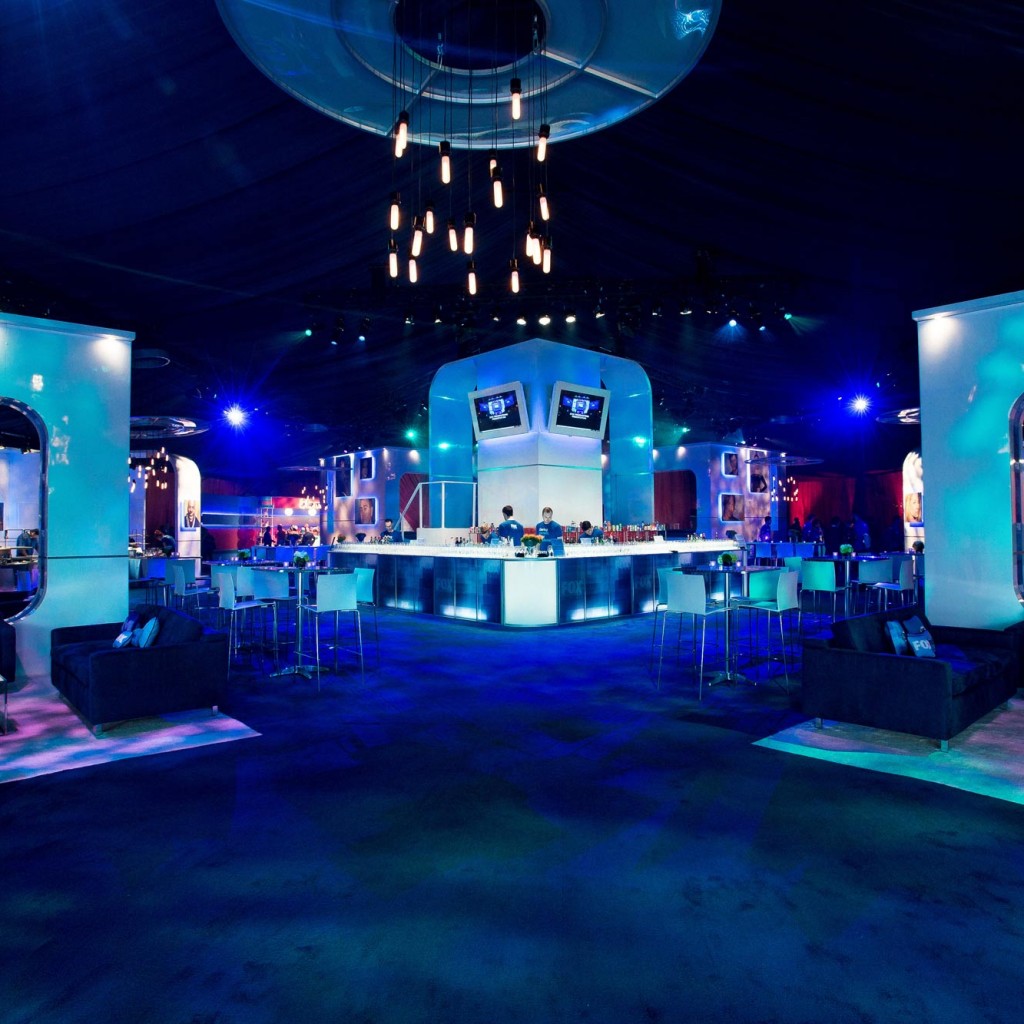
High-caliber event sets like this one for FOX can only come together with strong teamwork and open communication.
2. Have a clear and well-communicated budget
Make sure you have a clear budget to work with upfront, so that your vendors can best advise you on your project. Withholding your true budget as a negotiating tactic usually just lengthens the whole pricing process.
If the budget changes, communicate this with your team of vendors. No-one likes to be the bearer of bad news! However, it’s critical that everyone is on the same page, and communicating changes early frees up more time to create solutions.

Budgets can change… just make sure your vendors are aware when they do.
3. Lock in a schedule and stick to it!
Ensure your team of vendors understands your key deadlines. And also take time to understand your teams’ key deadlines. For example, sending all required design and graphics files to your scene shop on schedule avoids delays. Rush jobs cost more and are more likely to go wrong!
Sourcing props is one area which seems to turn hairs gray in the event industry. Be realistic about timing when sourcing props, and understand that short lead times may necessitate overnight shipping expenses. Don’t subject yourself to the stress of not having key props delivered on time, which is especially likely when sourcing from offshore suppliers – be open to alternatives which are faster and simpler to source.
4. Know your event site
Contract with your scene shop for a site survey. This is an additional expense which can be tempting to skimp on. But having your scene shop visit the site and create a detailed site survey is almost guaranteed to save you money and time in the end – no last-minute ‘surprises’ which limit access to the space, scenery which doesn’t quite fit, etc.
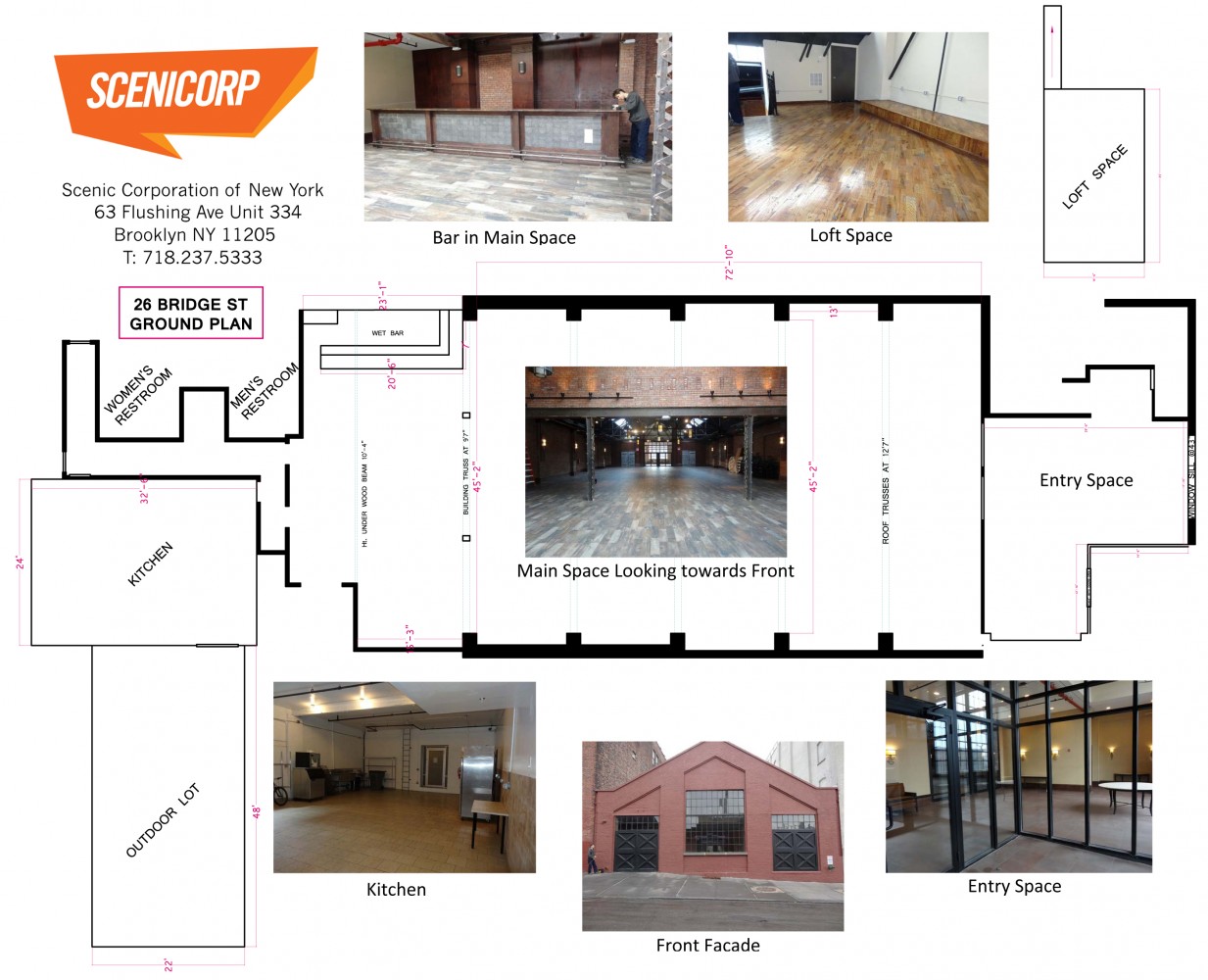
A Scenicorp Site Survey which includes detailed drawings and measurements of the event space, as well as site limitations to be considered in the set design and build.
If possible, the client should meet with the event designer, producer, and scene shop at the actual event site for a walk-through. This helps to identify potential issues that can be avoided by everyone being on the same page.
When considering inclement weather conditions, don’t just think about outdoor events – the weather influences indoor events too! For example, coat checks, non-slip rugs and umbrella storage for wet and cold weather, back-up solutions for scenery which could be affected by strong wind conditions, etc. Have set placement planned out ahead of time and communicated with the scene shop. Last-minute changes to the set-up on event day can lead to significant delays.
Understand the security policies of the event site, and have all event crew and transport providers cleared for access on the day.
5. Make safety & structural integrity a priority
It goes without saying that you want event attendees to be safe during your event. Don’t cut corners when it comes to structural engineering – many legal and safety issues arise with poorly planned scenery.
There are also insurance and permitting requirements that venues may require of your vendors. It’s important to know these and communicate them with your vendors ahead of time so you know that they can comply with the requirements. Examples include:
- Certificates of Insurance. Don’t get caught in a position where your venue won’t allow a vendor to finish the job because they don’t have adequate insurance coverage – check that your vendors’ coverage (scene shop, lighting, caterers, etc) meets the venue’s requirements.
- Permits. Confirm all permit requirements for your event well ahead of time and allow for delays when dealing with government agencies.
- Fire certificate requirements. Most venues require fire certificates to confirm that the set build has been correctly fireproofed.

Check venue and other local requirements early so you can keep your event attendees safe and ensure the show goes on.
What’s the common theme?
The common theme among these solutions is communication. Whether this is communicating the budget, keeping everyone aware of timelines and milestones, or ensuring your team is engaged with each other – keeping communication lines open is the best strategy for avoiding hiccups and making your event the best it can be.


